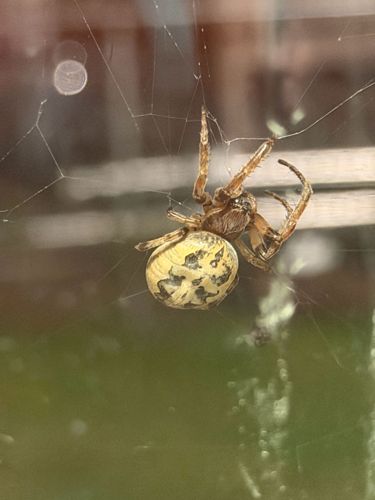Furrow Orb-weaver
Scientific Name: Larinioides cornutus
Order & Family: Araneae / Araneidae
Size: Females typically have a body length of 6-14 mm; males are smaller at 5-9 mm. Leg span can be significantly larger.

Natural Habitat
Commonly found in moist areas near water such as rivers and lakes, but also frequently on man-made structures like buildings, fences, and bridges, as well as in gardens and meadows.
Diet & Feeding
Insectivorous. They build classic orb webs to capture flying insects like flies, moths, mosquitoes, and beetles. The spider waits in a nearby retreat and senses vibrations from trapped prey.
Behavior Patterns
Primarily nocturnal. They build a new web each evening and often consume the old one to recycle the proteins. During the day, they hide in a silken retreat constructed in a crevice or folded leaf near the web's edge. The life cycle typically lasts one year, with adults being most common in late summer and autumn.
Risks & Benefits
Highly beneficial to ecosystems and gardens as they control populations of flying insects, including common pests. They are not aggressive and are harmless to humans. A bite is rare and would only occur in self-defense, resulting in minor, localized symptoms similar to a bee sting.
Identified on: 9/26/2025